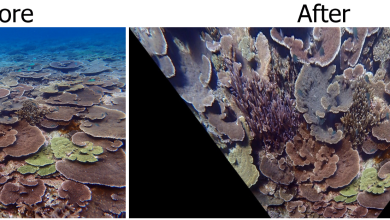Particle Physicist Earns $380,000 for Muon Research and Grid Computing
MELBOURNE, FLA.—Marcus Hohlmann, Florida Tech Department of Physics and Space Sciences associate professor, was awarded $229,000 in third-year grant funding from the Domestic Nuclear Detection Office (DNDO) in the Department of Homeland Security for continued research on cargo
inspection with muon tomography. In addition, the Office of High Energy Physics in the Department of Energy (DOE) awarded Hohlmann $151,000 in a three-year grant to conduct fundamental research in experimental particle physics with muons at the Compact Muon Solenoid (CMS) experiment at CERN. The CMS is one of the large international experiments at CERN’s Large Hadron Collider (LHC) in Switzerland.
Muons are elementary particles that are naturally produced by cosmic rays, which arrive from deep space and constantly bombard the Earth’s atmosphere. At high energies these heavier relatives of electrons are difficult to block by concrete or lead.
Hohlmann’s research group recently finished two years of simulating muon tomography with Florida Tech’s most powerful computer cluster,
which was built by Hohlmann’s undergraduate research students for this purpose. This intense simulation work was done in close cooperation with Florida Tech Professor of Computer Science Debasis Mitra and his students, who develop and test tomography algorithms for data analysis.
The main promise of muon tomography is that it can detect threatening nuclear materials even if they are heavily shielded by everyday materials such as steel or lead.
The high energy physics group is using the new funding to construct a small-scale experimental prototype, which will precisely measure the scattering of muons by high-density materials with high atomic number, such as uranium. Such materials could pose a grave threat if smuggled into the United States and assembled into a nuclear or dirty bomb.
This brings the total funding for this project, to just over $1,000,000.
Second Award
Hohlmann’s second award continues his work with CERN’s Large Hadron Collider. The new, massive proton accelerator was built to shed more light on the fundamental nature of mass by searching for the famous, yet elusive Higgs boson and on the nature of “dark” matter, among other goals.
The LHC is slated to begin regular operations by the end of 2009 after the completion of repairs on its superconducting magnets.
With physics graduate students Samir Guragain and Himali Kalakhety, Hohlmann is responsible for the alignment of large components of the CMS muon detectors. They will also scrutinize CMS data for any signs of new fundamental forces in nature that could manifest themselves via a new particle, the so-called Z’ boson, which might reveal itself through its decay into a muon and an anti-muon.
The DOE award includes $30,000 in stimulus funding from the 2009 American Recovery and Reinvestment Act to upgrade the existing computer cluster. The planned upgrade will bring the number of processors in the cluster to over 200 as well as increase the total available mass storage to 36 Terabytes.
This will allow the high energy physics group to analyze entire sets of LHC physics data on the university campus and let them actively support the global CMS collaboration by storing data sets.




